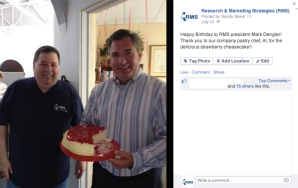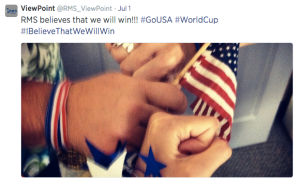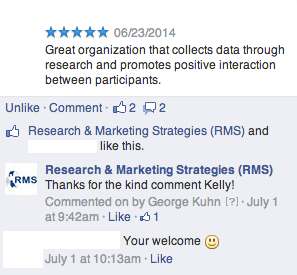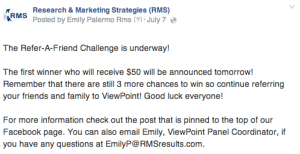The following post was written by Mark Dengler, President at RMS.

As summer starts to wind down, I trust that folks are enjoying the sunny and hot weather. However, don’t be fooled by these hazy days. Companies can’t afford to be lazy. Summer is actually an excellent time to work on relationship marketing strategies with existing and prospective customers. It is an opportunity to reach out and touch base with key contacts and connections.
“Relationship Marketing” is a marketing approach that focuses on building strong customer relationships and long term engagement. It is often associated with customer loyalty program development, but can prove very effective in prospecting and enhancing brand awareness. It is built upon communication strategies that encourage two-way interaction and engagement. Obviously, it is critical to be utilizing relationship marketing strategies throughout the entire year, however the summer is a particularly good time to connect with folks. For many, this popular vacation season slows the deadline-focused intensity in companies, and people are more willing to interact.
Over the next couple of weeks, it makes sense to consider implementing the following key marketing strategies to better position your organization for a strong fourth quarter and building strong relationships:
- Identify your top customers and make a personal inquiry as to their needs and satisfaction with your product/service. Your senior leadership should be involved with this activity. Simply by asking for customer feedback, you demonstrate to customers their value.
- Mystery Shop your organization. It was Maya Angelou who said “people may forget what is said or done, but they never forget how you made them feel.” This quote embodies the heart of customer relations. Companies need to look at their own processes from this perspective, making sure that customers and prospects have a positive interaction experience.
- Examine your “listening posts.” What are the ways that customers and prospects inform you of their needs and experiences? Do you have listening posts? Are these being used? Now may be the perfect time to enhance your tools of interaction. Refresh your website capabilities. Implement a customer survey. Conduct some key research in-depth interviews. Find effective ways to “listen” to your customers and prospects so that you can continue to meet their needs.
- Focus on informing rather than promoting. Companies that look to position themselves as knowledgeable experts in a particular area are able to build market followers. These followers include both customer and prospects. Establish your organization as a go to source for information. Look to offer free resources such as white papers, webinars, and podcasts.
- Optimize social media to depict your organization’s culture and values. In building relationships, people want to affiliate with those that are most like them, hence the term homophily. This is true with organization affiliation as well. Companies need to promote their culture, values and beliefs to help brand themselves. It serves as a means for individuals to identify and affiliate with. With evermore competition, this approach is a way to differentiate your organization and foster strong relationships.
Summer is definitely a great time to enhance your relationship marketing with customers and prospects. And it never hurts to take advantage of the sunny weather in the meantime.
Research & Marketing Strategies (RMS) is a full service marketing and market research firm located in Baldwinsville, NY. RMS provides an array of research methodologies that result in actionable analytics and recommendations for the client to enhance decision making. RMS is also home to QualiSight, a premier focus group and interview research facility, and RMS ViewPoint, a leading consumer research panel in Central New York. Visit our website at RMSresults.com.














